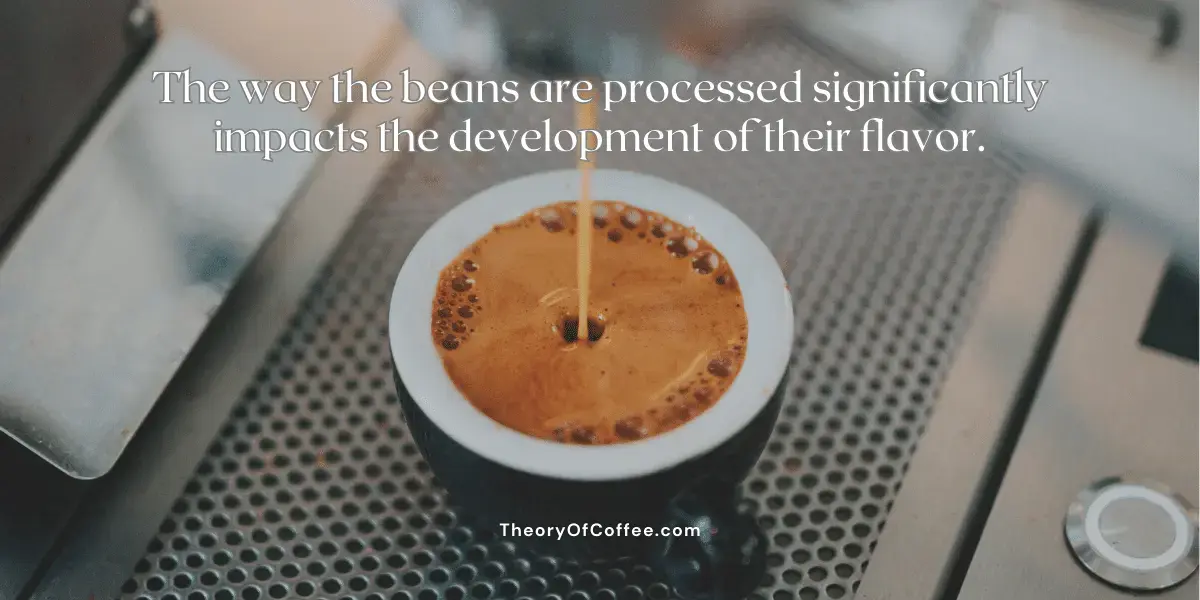Sip by Sip: Exploring the Global Charms of Coffee
With its enchanting aroma and refreshing taste, coffee possesses an allure that transcends borders and resonates with people worldwide. Its universal popularity is a testament to its undeniable charm, captivating connoisseurs and casual drinkers alike. Whether served as a robust morning ritual or a comforting afternoon pick-me-up, coffee's ability to awaken the senses and ignite conversations is unmatched. This cherished beverage has an innate power to bridge gaps and create a sense of shared experience, uniting individuals from diverse backgrounds under the umbrella of a single, beloved brew.
Beyond its sensory pleasures, coffee carries profound cultural and social significance, shaping communities and societies throughout history. From bustling cafés in Europe where intellectuals gathered to exchange ideas to the vibrant coffee ceremonies in Ethiopia that symbolize hospitality and unity, coffee is more than just a drink—it's a conduit for human connection. Its presence during moments of celebration, mourning, and everything in between underscores its role as a facilitator of dialogue and companionship. Across continents, coffee has embedded itself in the tapestry of culture, influencing traditions, art, and daily rituals, leaving an indelible mark on the lives of individuals and entire communities.
Coffee, a universal language, resonates with people from all corners of the globe. Its captivating aroma evokes memories while its exquisite taste sparks enriching conversations. Furthermore, its profound cultural significance serves as an agent that unites diverse generations. Whether in the bustling streets of New York or amidst the serene beauty of a Colombian coffee plantation, coffee transcends boundaries and connects individuals from every walk of life. By partaking in this centuries-old tradition, we actively engage in an experience that has left an indelible mark on our world. Coffee fosters relationships, inspires innovation, and acts as a gentle reminder of our inherent yearning for human connection and solace.
1. The Origins of Coffee

Coffee has its roots in the ancient coffee forests of Ethiopia, where legend has it that a goat herder named Kaldi discovered the energizing effects of coffee beans. As the story goes, Kaldi observed his goats becoming unusually lively after eating the red berries from a specific plant. Intrigued, he tried the berries himself and felt a surge of energy.
This discovery gradually spread to monks in monasteries, who found that brewing these berries into a beverage helped them stay awake during long prayer sessions. The knowledge of this refreshing drink went from Ethiopia to the Arabian Peninsula. By the 15th century, coffee was cultivated in Yemen, becoming an integral part of local culture.
Coffee's popularity continued to grow, leading to the establishment of the world's first coffeehouses in the Middle East. These coffeehouses, qahveh khaneh, became vibrant centers for social interaction, intellectual discourse, and entertainment. The spread of coffee was facilitated by trade, with Yemeni traders bringing coffee beans to North Africa, Europe, and beyond.
By the 17th century, coffee had reached Europe, captivating the likes of philosophers, artists, and writers who frequented coffeehouses to engage in discussions and exchange ideas. Coffeehouses became known as "penny universities" due to the wealth of knowledge shared within their walls.
The journey of coffee continued with the Dutch, who managed to cultivate coffee plants in their colonies in Southeast Asia. This led to coffee's expansion to places like Java and Sumatra. The French also spread coffee cultivation to the Caribbean and the Americas, where coffee plantations thrived in regions with suitable climates.
The fascinating origins of coffee reveal a journey that spans continents and cultures. From its accidental discovery in Ethiopia to the bustling coffeehouses of the Middle East and the global trade routes that facilitated its spread, coffee's rich history has shaped how we enjoy this beloved beverage today.
2. The Coffee Bean Journey: From Farm to Cup

Trace the process of coffee cultivation, harvesting, processing, and roasting. Highlight the importance of each step in influencing the final flavor.
- Cultivation: The environment in which coffee plants are grown significantly impacts the flavor of the beans. Factors like altitude, climate, soil composition, and even the angle of sunlight contribute to the coffee's taste. Higher altitudes often yield beans with brighter acidity and more nuanced flavors. In comparison, lower altitudes might produce beans with more body and sweetness. The careful tending of the plants ensures that they absorb the proper nutrients, resulting in healthy cherries bursting with complex flavors.
- Harvesting: Selecting only ripe cherries during harvesting is crucial. Underripe or overripe cherries can introduce undesirable flavors to the final brew. Ripe cherries contain the optimal balance of sugars and acids, contributing to the coffee's sweetness, acidity, and overall flavor complexity.
- Processing: The way the beans are processed significantly impacts the development of their flavor. The "washed" process produces cleaner and brighter flavors, involving fermentation and thorough washing. On the other hand, the "natural" method, where cherries are dried with their fruit intact, imparts fruitier and more intense flavors to the beans. The choice of processing method can emphasize specific flavor notes and influence the overall character of the coffee.
- Roasting: Roasting is where the transformation from green beans to aromatic coffee takes place—the degree and duration of roasting influence the chemical reactions within the beans, affecting flavor compounds. Light roasts retain the bean's natural characteristics, highlighting origin-specific flavors. Medium roasts strike a balance between origin traits and the development of roast flavors. Dark roasts bring out smoky, bold notes but can also diminish some origin nuances. Roasting is a delicate dance that requires a deep understanding of the beans' composition and desired flavor outcomes.
Each step is a brushstroke on the flavor canvas, with cultivators, harvesters, processors, and roasters working harmoniously to bring out the best in the coffee beans. The art lies in preserving the unique qualities of the beans' origin while coaxing the desired flavors that will eventually be savored in your cup.
3. Coffee Varieties and Brewing Techniques

Coffee is available in various forms, each boasting its distinct flavor, enticing aroma, and specific brewing technique. The diverse array of coffee experiences stems from the different types of coffee and brewing methods utilized. Allow me to provide an explanation of some popular coffee varieties as well as the techniques employed for brewing them:
3.1. Coffee Varieties
- Espresso: Espresso is a strong coffee that forces hot water through finely-ground beans. It is the base of many other coffee drinks and has a rich flavor and crema layer.
- Americano: An Americano is created by adding hot water to a shot of espresso, producing a less concentrated flavor.
- Cappuccino: A cappuccino is made with equal parts espresso, steamed milk, and foam, creating a balanced blend of strong espresso and creamy milk.
- Latte: A latte combines espresso with steamed milk and a thin layer of foam on top. It has a milder coffee flavor and a creamier texture.
- Mocha: Mocha is a delightful concoction created by blending rich espresso, velvety steamed milk, luscious chocolate syrup, and a dollop of heavenly whipped cream.
- Macchiato: A macchiato means "stained" or "marked" in Italian. It's an espresso "stained" with a small amount of milk or milk foam, creating a strong coffee flavor with a touch of creaminess.
- Flat White: Like a latte with a higher coffee-to-milk ratio, a flat white has a velvety microfoam texture and a strong coffee taste.
3.2. Brewing Techniques
- Pour-Over: Pour-over coffee is made by slowly pouring hot water over coffee grounds in a filter, allowing the water to drip through and extract the rich flavors. It requires skill and precision to control factors like water flow and brewing time.
- French Press: Coarsely ground coffee is steeped in hot water in a French press (or press pot). After steeping, a plunger with a mesh filter is pressed down to separate the grounds from the brewed coffee.
- Aeropress: The Aeropress is a portable device that uses air pressure to push hot water through coffee grounds, resulting in a quick and intense extraction. It allows for various brewing methods and produces a smoother cup of coffee.
- Cold Brew: Cold brew involves steeping coarsely ground coffee in cold water for an extended period, usually 12-24 hours. Concentrated coffee is often diluted with water or milk before consumption.
- Siphon: Siphon Brewing uses a two-chamber vacuum system. Water is heated in the lower chamber and mixed with coffee grounds as it moves upward. After brewing, the coffee returns to the lower section after removing the heat source.
- Turkish Coffee: Finely ground coffee, water, and sugar (optional) are combined in a small pot and heated until the coffee forms a foam. It's known for its intense flavor and sediment at the bottom of the cup.
These are just a few examples of the many coffee varieties and brewing techniques available. Each method produces distinct flavors and characteristics, allowing coffee enthusiasts to explore various tastes and experiences.
4. The Art of Espresso

The art of espresso delves into the intricacies of crafting one of the most beloved and concentrated coffee beverages. Espresso is more than just a quick shot of caffeine; it's a culmination of science, technique, and sensory appreciation.
At its core, espresso results from forcing hot pressurized water through finely-ground coffee beans. This rapid extraction process concentrates the flavors and aromas of the coffee, resulting in a strong, bold, and intense shot. The key lies in achieving the right balance between extraction time, water temperature, and grind size. Baristas carefully adjust these variables to create the ideal extraction that showcases the coffee's nuanced flavors while avoiding bitterness or over-extraction.
4.1. Espresso, its Extraction Process, and the Importance of Crema
Espresso is a concentrated coffee beverage beloved for its intense flavor and rich, velvety texture. The espresso extraction process is a delicate art that involves forcing hot water through finely ground coffee under high pressure. This rapid extraction process creates a shot of espresso, typically measuring about 1 ounce in volume.
The crema is a distinguishing feature of a well-made espresso. It forms as a creamy, golden-brown foam during the extraction process when the oils in the coffee grounds emulsify. With its visually appealing layer and flavorful indicator, the crema enhances the complexity of taste in the espresso. A thick and persistent crema often signifies a well-balanced extraction.
4.2. Popular Espresso-Based Drinks: Cappuccino, Latte, and Macchiato
Cappuccino, latte, and macchiato are three classic espresso-based drinks that showcase the versatility of espresso as a base ingredient.
- Cappuccino: A cappuccino is a delightful fusion of espresso, steamed milk, and foam. This well-balanced concoction is traditionally presented in a small cup, observing a precise ratio of one-third espresso, one-third steamed milk, and one-third foam by skillfully layering these elements together, a visually pleasing beverage with an impeccably harmonized flavor profile emerges. Enthusiasts of this divine drink can tailor their cappuccinos by adding flavored syrups or embellishing them with cocoa or cinnamon.
- Latte: A latte is a milder and creamier option. It's made by combining a shot of espresso with a more considerable amount of steamed milk, usually topped with a small layer of milk foam. This results in a smoother texture and a more pronounced milk flavor. Lattes offers a canvas for latte art, where baristas skillfully create intricate designs on the surface using milk foam.
- Macchiato: The term "macchiato" has its roots in Italian, where it translates to "stained" or "marked." In coffee, an espresso macchiato stands out as a small yet impactful beverage. It comprises a shot of espresso infused with a hint of milk or foam. This minimalist creation masterfully showcases the boldness of espresso while incorporating a subtle touch of creaminess. Additionally, variations such as the "latte macchiato" exist, wherein the focus shifts towards highlighting milk's prominence and having a delicate layer of espresso marking its surface.
These espresso-based drinks showcase the art of balance between espresso and milk, creating a spectrum of flavors and textures to suit different preferences. From the robust intensity of a well-pulled espresso to the velvety smoothness of a latte or cappuccino, these drinks are a testament to the creative possibilities that arise when espresso is the foundation for coffee craftsmanship.
5. Coffee Culture Around the World

The embrace of coffee rituals and traditions across different cultures showcases the versatility of this beloved beverage as a conduit for cultural expression, social interaction, and historical identity. Each culture infuses coffee with unique values and practices, creating a rich tapestry of coffee traditions worldwide.
- Turkish Coffee: In Turkey, coffee is not just a beverage; it's a cherished cultural practice steeped in history. Turkish coffee preparation is an art form. Ground coffee, sugar, and cardamom are simmered in water using a cezve. The resulting brew is poured into small cups, grounds, and all. Turkish coffee is often served with water to cleanse the palate. The practice extends beyond the act of drinking—the coffee grounds at the bottom of the cup are used for fortune-telling, adding an element of mystique to the experience. Turkish coffee ceremonies embody the country's warmth, hospitality, and traditions.
- Italian Espresso Culture: Italy's espresso culture is synonymous with sophistication and efficiency. Italians take their coffee standing up at the bar of a café, where they engage in quick but meaningful interactions with baristas and fellow patrons. The espresso shot, a concentrated flavor burst, exemplifies Italy's attention to quality and the pursuit of life's simple pleasures. The café culture is an integral part of Italian society, fostering camaraderie and providing a momentary escape from the hustle and bustle of everyday life.
- Scandinavian Fika: In Scandinavian countries like Sweden, fika is a cultural institution around coffee breaks. More than just a pause for a cup of coffee, fika is a moment to connect with others and cultivate a sense of community. It's accompanied by pastries, cakes, or sandwiches, encouraging people to slow down, engage in conversations, and enjoy the present moment. Fika represents the Nordic values of balance, togetherness, and appreciating life's small pleasures.
These unique practices exemplify how coffee becomes a vessel for cultural expression, storytelling, and human connection. By embracing coffee rituals in distinct ways, different cultures celebrate their histories, values, and social bonds, proving that while the beverage is constant, its role in shaping cultural experiences is delightfully diverse.
6. Health Benefits and Trends

We highlight the potential health benefits of coffee consumption by shedding light on the positive effects of moderate coffee intake on overall health. Coffee is not only a beloved beverage but also a source of various compounds that may offer certain health advantages when consumed in moderation:
6.1. Coffee Health Benefits
- Antioxidant Richness: Coffee is recognized for its abundant antioxidants, including chlorogenic acid and quinides. These potent compounds actively combat oxidative stress, safeguarding our cells from potential damage. By promoting overall well-being and mitigating the risk of chronic diseases, antioxidants play a crucial role in maintaining good health.
- Enhanced Cognitive Function: Coffee is known for its caffeine content, a natural stimulant that enhances cognitive abilities. It promotes alertness, focus, and boosts short-term memory. Moreover, moderate consumption of caffeine has been associated with a decreased risk of cognitive decline and neurodegenerative diseases like Alzheimer's and Parkinson's.
- Cardiovascular Health: Some studies suggest that moderate coffee consumption positively impacts heart health. It is associated with potentially reducing the risk of stroke and certain heart diseases. Additionally, it may contribute to improved blood vessel function and reduced inflammation.
- Type 2 Diabetes Prevention: Regularly consuming coffee has been linked to a lower risk of developing type 2 diabetes. The bioactive compounds in coffee can enhance insulin sensitivity and help maintain stable blood sugar levels.
- Liver Health: Research suggests that drinking coffee may decrease the risk of liver diseases, such as cirrhosis and cancer. Antioxidants and other beneficial compounds in coffee help safeguard the liver.
- Physical Performance: The caffeine in coffee is known to enhance physical performance by increasing adrenaline levels and improving endurance. It can help improve exercise performance and aid in fat-burning during workouts.
- Mood Enhancement: Coffee consumption has been associated with a reduced risk of depression and a lower likelihood of developing mood disorders. The stimulating effects of caffeine contribute to an uplifted mood and overall mental well-being.
It's important to note that while coffee offers potential health benefits, excessive consumption or adding excessive amounts of sugar, syrups, and creams can negate these positive effects. Moderation is key. It is recommended to consult with a healthcare professional, particularly if you have any specific health conditions or concerns. Highlighting the potential health benefits of coffee consumption showcases the multifaceted nature of this beloved beverage beyond its taste and aroma.
6.2. Coffee trends
We explore current coffee trends, such as nitro coffee, cold brew, and coffee cocktails, by delving into the contemporary shifts and innovations in coffee consumption. These trends highlight how coffee is continually evolving to cater to diverse preferences and lifestyles:
- Nitro Coffee: Nitro coffee is a recent trend that involves infusing cold brew coffee with nitrogen gas, resulting in a velvety, foamy texture similar to that of a stout beer. The nitrogen adds a creamy mouthfeel and enhances the coffee's natural sweetness. Served on tap, nitro coffee has gained popularity for its unique presentation and refreshing taste. The nitrogen infusion process has transformed cold brew into a novel sensory experience.
- Cold Brew: Cold brew is another prominent trend that has become a staple during warmer months. It involves steeping coarsely ground coffee beans in cold water for an extended period, usually 12-24 hours. This results in a smooth, less acidic, and highly caffeinated coffee concentrate. Cold brew's mellow flavor profile and versatility have made it a favorite base for various coffee beverages and cocktails.
- Coffee Cocktails: The fusion of coffee and cocktails has given rise to a creative trend—coffee cocktails. Bartenders and coffee enthusiasts are experimenting with combining coffee with alcoholic spirits, liqueurs, and mixers to craft innovative and flavorful drinks. From espresso martinis to coffee-infused Old Fashioneds, coffee cocktails offer a sophisticated and caffeine-infused twist to traditional cocktails.
These trends reflect the evolving preferences of coffee consumers who seek variety, innovation, and unique experiences beyond the standard cup of joe. Nitro coffee, cold brew, and cocktails showcase how coffee has expanded beyond its conventional boundaries, appealing to various tastes and preferences. These trends also highlight the versatility of coffee as a base ingredient that can be enjoyed in different forms and settings, catering to both the purists and the adventurous.
7. Coffee and the Digital Age

The influence of social media on coffee culture holds significant sway, ultimately transforming how individuals perceive, share, and engage with content related to that sacred elixir. Through its vast reach, social media shapes and drives trends within the bustling coffee industry, fostering connections among fervent enthusiasts while enhancing the visual and experiential realms of coffee consumption.
- Visual Appeal and Aesthetic: Social media platforms like Instagram have brought a visual element to coffee culture, encouraging cafes and baristas to present their creations visually appealingly. The "latte art" trend, where intricate designs are crafted on the surface of coffee, gained prominence due to its shareability on platforms that prioritize visuals.
- Global Coffee Community: Social media has connected coffee lovers worldwide, fostering a global coffee community. Coffee enthusiasts can share their experiences, discoveries, and insights, transcending geographical boundaries. This has led to the exchange of diverse coffee knowledge and appreciation of international coffee cultures.
- Trend Propagation: Social media accelerates the spread of coffee trends. When a new brewing method, coffee drink, or concept gains traction, it can rapidly become a sensation through posts, hashtags, and videos. Trends like cold brew, nitro coffee, and innovative coffee art have gained popularity partly due to their viral presence on social platforms.
- Coffee Education: Platforms like YouTube and TikTok offer short, informative videos that teach viewers about different coffee beans, brewing techniques, and equipment. Coffee experts and enthusiasts share their knowledge, making coffee education more accessible and interactive.
- Influencer Culture: Social media influencers, who are often passionate about coffee, have shaped coffee preferences. Their recommendations and reviews impact coffee choices and create an avenue for showcasing new and unique coffee experiences.
- Cafe Culture and Discovery: Social media has turned coffee shop visits into experiences to be shared. People seek out cafes for their coffee and aesthetics, decor, and ambiance—all of which are highly shareable content on social media.
- New Business Avenues: Cafes and roasters have utilized social media to market, showcase their offerings, and attract customers. The ability to visually display products and engage with customers has helped establish coffee businesses and reach a wider audience.
The impact of social media on coffee culture is undeniable. It has transformed how we experience and engage with coffee, creating a new visual, interactive, and connected dimension. Through various platforms, individuals now have the means to share their unique coffee journeys, explore exciting trends, and connect with a vibrant global community of fellow coffee enthusiasts. This digital revolution not only enhances our enjoyment of coffee but also influences the direction of coffee culture itself by amplifying existing trends and giving rise to innovative ones.
8. The Joy of Coffee Moments

Coffee plays a remarkable role in creating cherished moments and fostering connections in people's lives. Its unique ability to bring individuals together, evoke emotions, and provide a comforting ritual has turned coffee into more than just a beverage – it's a catalyst for meaningful experiences. Here's how coffee contributes to the creation of cherished moments and connections:
- Shared Rituals: Coffee is often enjoyed in the company of others, whether during a casual catch-up with friends, a cozy family breakfast, or a business meeting. Sharing a cup of coffee creates a ritual that facilitates bonding and communication.
- Social Gatherings: Coffee shops serve as communal spaces where people gather to socialize, study, or work. These establishments offer an environment conducive to conversations and interactions, making them ideal places for forging connections.
- Meaningful Conversations: Coffee has a way of encouraging open and honest conversations. Sharing coffee often creates a relaxed atmosphere that fosters genuine connections, whether heart-to-heart talks, deep discussions, or light-hearted banter.
- Dates and Romance: Coffee dates are a classic choice for getting to know someone better. The casual setting of a coffee shop provides a comfortable backdrop for first dates, fostering a low-pressure environment for meaningful conversations and potential romantic connections.
- Cultural Exchange: Coffee is a global phenomenon, and each culture has its unique way of enjoying it. Exploring different coffee cultures can lead to cultural exchanges, allowing people to learn about traditions and lifestyles worldwide.
- Memorable Moments: Coffee often accompanies significant life events – from celebratory gatherings to comforting conversations during difficult times. Sharing coffee during these moments can create lasting memories and connections.
- Creative Collaborations: Coffee shop frequently host artists, writers, and entrepreneurs who come together to collaborate on projects. The relaxed atmosphere and the stimulative effects of coffee can lead to innovative ideas and collaborations that might not have occurred otherwise.
- Nostalgia and Traditions: Many fondly remember coffee, such as sipping coffee with grandparents or enjoying a warm cup by the fireplace. These nostalgic moments contribute to a sense of continuity and connection across generations.
- Cultural Significance: In some cultures, coffee ceremonies hold deep cultural significance. These ceremonies involve elaborate rituals that underscore the importance of community, hospitality, and connection.
- Personal Retreats: For introverts or those seeking solace, a quiet moment with coffee can be a personal retreat. It provides an opportunity for self-reflection, relaxation, and recharging.
In a fast-paced world, where technology often replaces face-to-face interactions, coffee symbolizes slowing down, connecting with others, and creating cherished memories. Its role in facilitating conversations, fostering relationships, and creating a sense of belonging is a testament to the powerful impact of this beloved beverage on human connections.
9. Conclusion

In the world of coffee, every sip is a journey, and every cup tells a story. From the lush coffee plantations where cherries ripen under the sun's embrace to the delicate art of brewing that transforms beans into liquid magic, our exploration of coffee has taken us through diverse landscapes, cultures, and flavors. We've uncovered the science behind the aromas, the traditions that infuse each cup, and the dedication of coffee farmers who pour their heart and soul into their craft.
We encourage you to keep your coffee curiosity alive. Experiment with different brewing methods, explore new coffee origins and create your coffee blends. Dive into the world of latte art, try pairing coffee with diverse cuisines, and never stop savoring the joy of discovering new flavors and aromas. Just as the coffee journey is endless, so are the possibilities for delighting in its nuances.
Whether you enjoy an occasional cup of coffee or aspire to be a barista, there is something for everyone in the coffee world. Let each cup be an invitation to celebrate the artistry, science, and culture that unite in this beloved beverage.